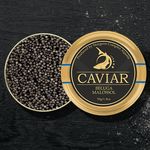
What’s So Special About Black Caviar? From Beluga to Sterlet
Black caviar isn’t just food — it’s culture. A symbol of elegance and celebration, caviar has found its way from royal banquets to modern tasting menus. But what makes it so unique? Why is one type preferred over another? Let’s dive in.
🕰 A Glimpse into History
People in Ancient Rus loved caviar — though it was mostly salted and eaten from wooden spoons. The luxurious image came later. In 19th-century Europe, Russian caviar conquered Paris and London with its unique flavor. It was served at noble tables and became a sign of high status. Even in Soviet times, black caviar was the New Year’s treat — in tiny cans and always in short supply.
Today, caviar is a high-end delicacy exported worldwide. One of the most advanced farms in Europe is located in Moldova — the Aquatir sturgeon complex, where fish are raised under sustainable and controlled conditions.
Types of Caviar — What’s the Difference?
Let’s talk about the stars of the show:
- Beluga caviar: The queen. The rarest, largest, and most expensive. Delicate, buttery, and smooth — every pearl melts in your mouth. Belugas live up to 100 years and don’t produce eggs until 15–20 years old. No wonder it’s so precious.
- Russian sturgeon caviar: Bold, flavorful, with a slight nutty tone. Think of it as the Bordeaux of caviar — timeless, rich, and always in demand.
- Bester caviar: A cross between beluga and sterlet — the perfect blend of creamy and savory. Ideal for both beginners and connoisseurs.
- Sterlet caviar: Smaller, more aromatic, and a bit saltier. It doesn’t scream for attention but offers a charming introduction to the world of black caviar.
Price & Popularity
Black caviar is a global business worth billions. Prices range from €800 to €5000 per kilo. Beluga remains the most expensive due to its rarity. Over the past 20 years, wild sturgeon fishing has been largely banned, so nearly all caviar now comes from farms — a big win for sustainability.
🍽 How Do You Eat It?
Traditionally: on blinis, with eggs, chilled vodka, or champagne. But chefs today get creative — serving it with tuna tartare, avocado, or crispy chips. Just one rule: don’t overpower it. And never use a metal spoon — go for pearl, glass, or wood. Metal ruins the taste.
Each type of caviar has its own character, its own mood, and its own flavor. Taste, explore — and you’ll find the one that’s just right for you.





Leave a Reply